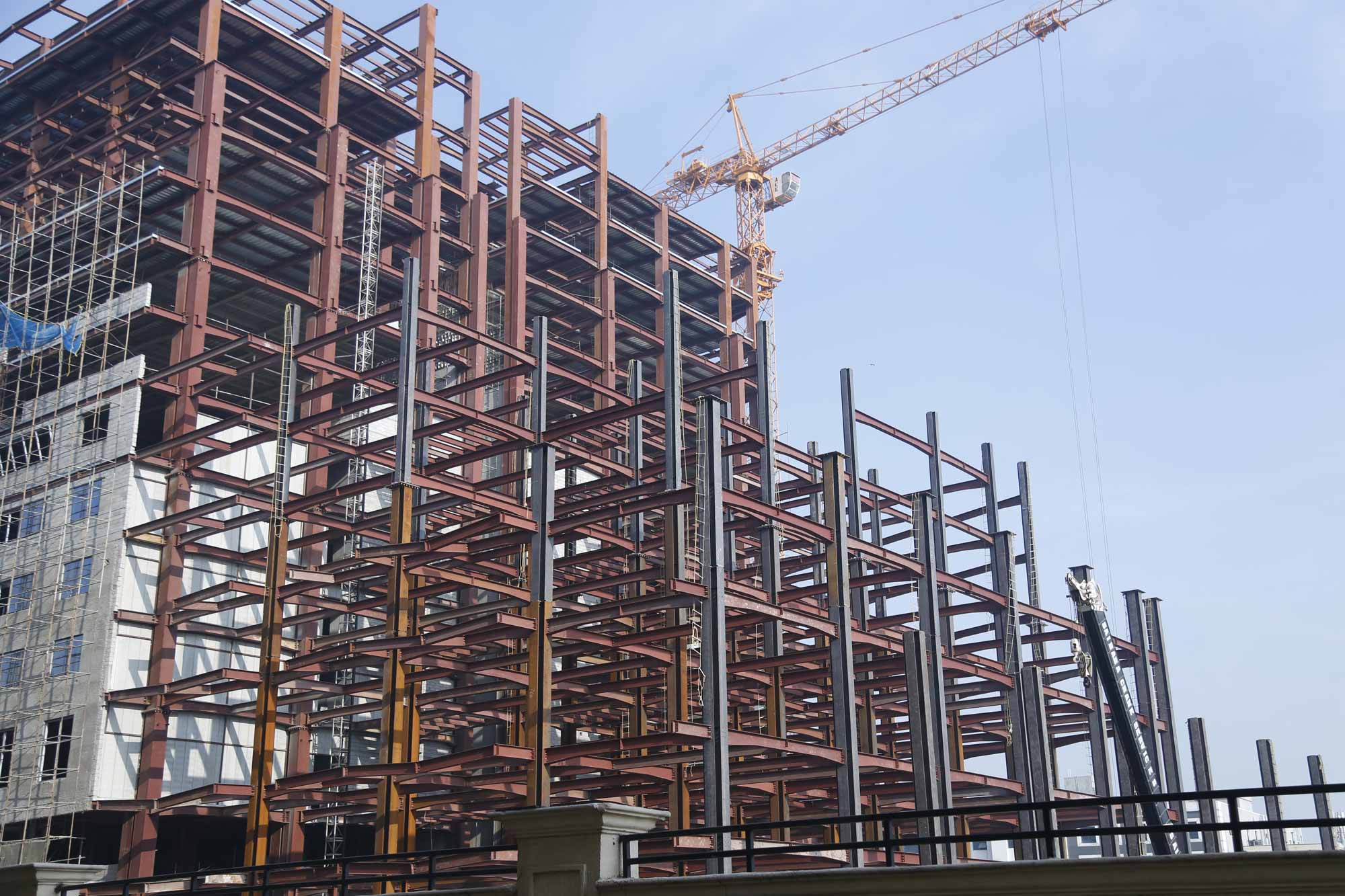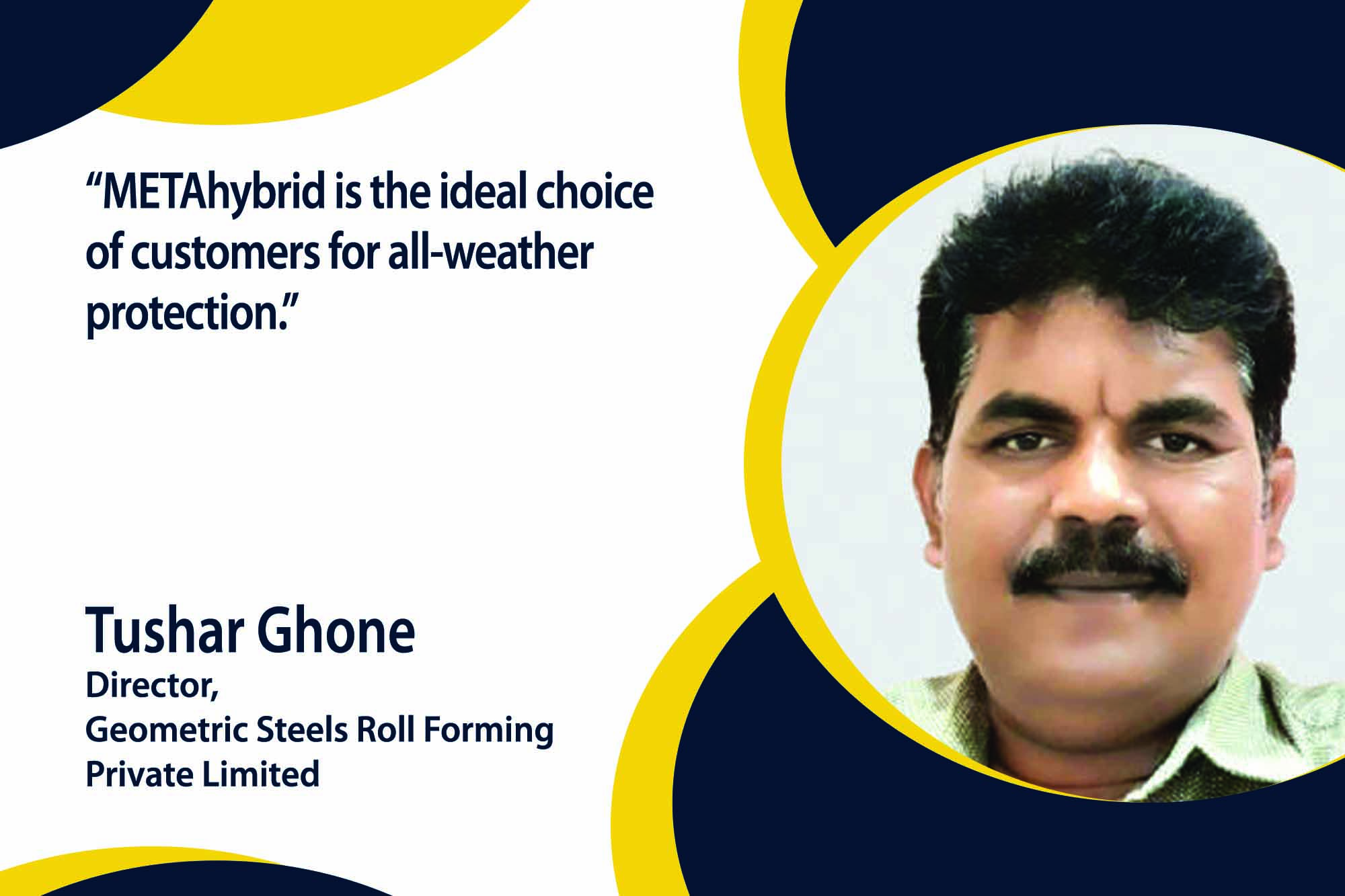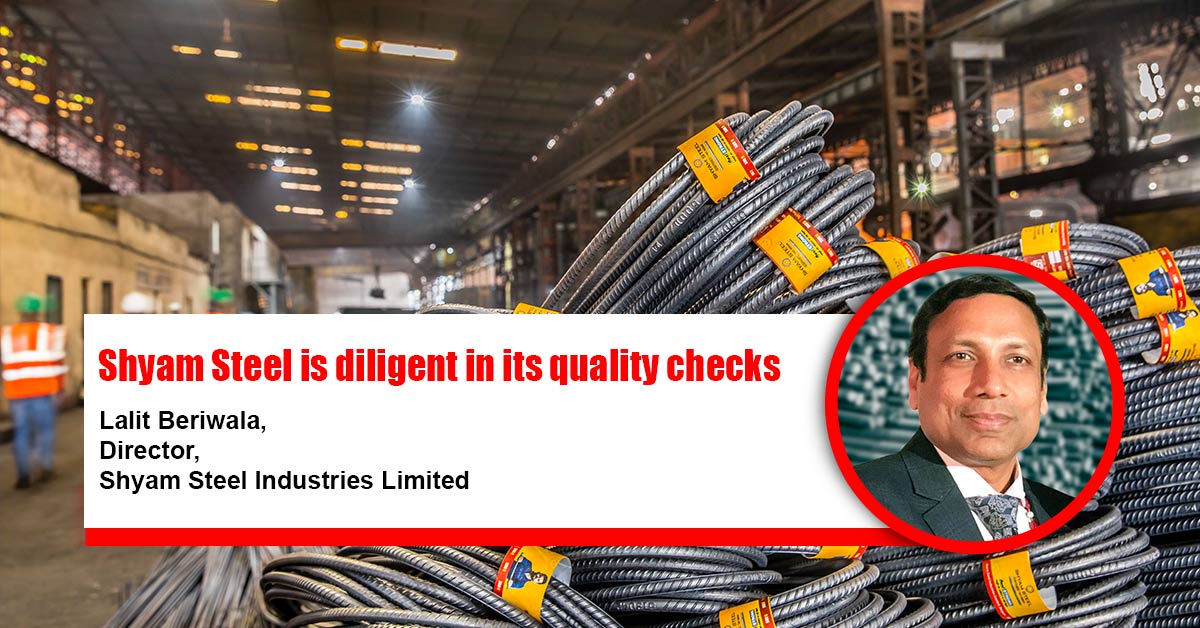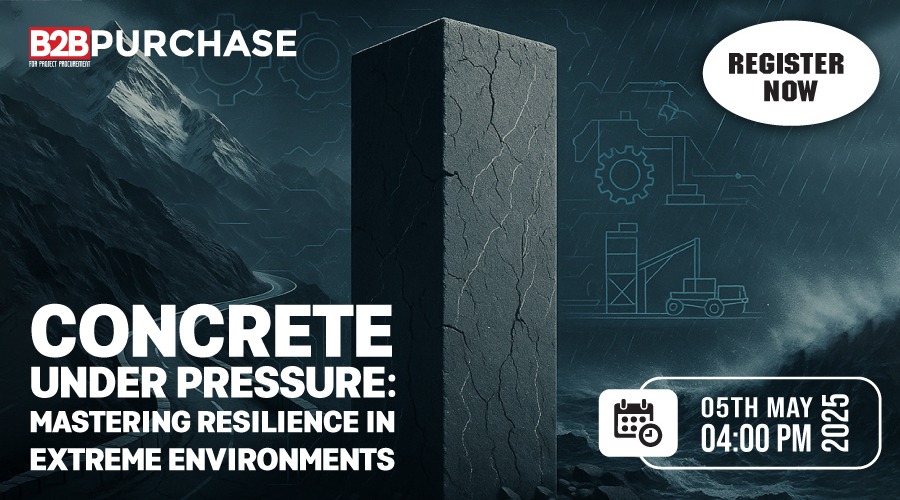Why metal building cost less in the long run
By Edit Team | January 17, 2018 12:59 pm SHARE

Highlighting the viewpoints as why a metal building cost less in the long run.
Globally any country’s growth is gauged by per capita consumption of steel. The per capita consumption of steel in India is 61 Kg against global average of 208 Kg. World’s largest producer of steel China produces around 808 Million MT of steel and consumes around 733 MMT against India’s 96 MMT production. This figure clearly highlights how India is lagging behind in using the steel in national building.
2017 draft national steel policy projects crude steel capacity of 300 MMT and a per capita consumption of 158 KG by 2030. Which is a very ambitious target keeping in view the past growth of steel industry and consumption pattern in India.
There are 1.77 million homeless in India, and honourable PM has set a target for the nation- every Indian must have a house by 2022. A tough task, only good planning and judicious spending of funds and using new technologies or building materials will help the state to meet the dead line.
Flexibility in designing the buildingsstrong
K Rajarama Rao, Chief General Manager – Materials, NCC Ltd, says, “In recent past we have witnessed an upswing in steel usage in construction space, viz., metro railways, shopping malls, office buildings etc., this is necessitated as steel is the versatile material compared to concrete. Engineers or architects will have more flexibility in designing the buildings and can achieve squeezed completion schedules.”
He adds, “During the last decade, lot of experimenting has happened with newer materials and construction alternatives. Not all have led to replicable ideas, but this impulse to explore is important to us today. Sometimes, we have simply tried out a foreign practice, like concrete technology which came from Europe in a big way after our independence. Within half a century, it has swept across India, shifting the way we built for centuries.”
Among such imported ideas, building with steel is trying to find a foothold in India today. Rao explains, “While it is very common to see a public building with structural steel in the U.S., Europe and even in China. We hardly see them here with the exceptions of industries and temporary shelters, despite India being the third largest producer of steel in the world.”
Primary reason appears to be cost
Rao feels that the steel gives greater fire safety, while making it easy for future maintenance and alterations. Yet, why are steel buildings not common in India?” He informs, “The primary reason is cost, where all the above advantages come at a price not always worth, unless we are building in a congested city centre a commercial property with high site value. Steel structures demand greater precision than those built with masonry or concrete frame, hence the focus should be imparting skill to large numbers in a systematic manner to see more steel buildings emerging in India.”
Life of steel building is much higher than concrete structure
Initial cost on steel buildings will be much higher compared to traditional concrete buildings, but due to faster completion of mega projects, return on investment will be much quicker also the life of steel building is much higher than concrete structure.
He informs, “From government side also, remove red- tapeism and smoothen the process of approvals, so that international companies like Posco, Arcelor put up their manufacturing units in India, enabling increased availability of steel at cheaper prices.”
He adds, “There could be more arguments against steel buildings, but in the urbanising India, there would be more of them in future, especially where factors weighing against them like cost and energy may appear less important than site value or project period. All that we can hope for is as steel buildings get more common.”
Reduces maintenance cost
P V Rao, Managing Director, Pennar Engineered Building Systems Ltd, says, “Metal building costs less in the long run because the maintenance cost is very less. Except periodic cleaning of gutters and down spouts, there is no much maintenance. Expansions in width direction and length direction can be carried out in future at lesser cost. Green builders use steel in eco-friendly construction projects because of its durability and renewability.
Steel doesn’t lose quality, it is recycled
Steel is long-lasting, and combined with other eco-friendly building materials are often used for green building projects. And unlike other recyclable materials such as plastic, steel doesn’t lose quality each time it is recycled.”
Steel is also impervious to mold, rot, warping, cracking and pests, which increases building’s durability and longevity, and further reduces the lifetime maintenance costs. He informs, “Steel buildings have only one real vulnerability and that is moisture. Fortunately, features like standing seam roofing, thoughtfully planned site locations, gutters and downspouts and exceptional finish coatings have eliminated this concern.”
PEB – Flexibility to fulfil an unlimited range of building configurations
Jignesh P. Shah, CEO, Steelfab Building Systems, says, “The Pre-engineered buildings (PEB) facility allows the flexibility to fulfil unlimited range of building configurations, custom designs, requirements and applications.”
He adds, “A growing number of prominent international designers and contractors who had previously specified conventional structural steel buildings exclusively, have now discovered the PEB strength and approach. Thanks to this, they enjoy significant cost savings and benefits due to the faster construction cycle.”
Speed and value
PEBs are more elegant in appearance, have free head roof area and enjoy more storage space. From excavation to occupancy, the pre-engineered building system is unmatchable when it comes to speed and value.
Shah informs, “The cost of initial engineering of the structure, as well as later design revisions, is substantially reduced due to the inclusion of the engineering costs within the supply price of the PEB. Overall structure weight is 30 per cent lighter compared to the conventional structure hence price per square metre may be as much as 30 per cent lower than conventional steel.”
The use of tapered built-up primary structural members (columns and rafters) usually results in up to a 30 per cent weight advantage for the main rigid frames when compared to the use of conventional hot rolled sections as primary members. Also the average delivery time of Pre-engineered buildings is just 6 to 8 weeks compared to 20 to 26 weeks of conventional building. Being completely plant fabricated, the building is entirely re-locatable. Because of modular construction, the buildings are easily expandable on all sides (allowing for future expansion) Building shell is designed to accept custom manufactured standard accessories (roll up shutters, personnel doors, roof ventilators, louvers, windows, skylights, etc.) PEB design can incorporate additional standard structural subsystems such as mezzanines, cranes, canopies etc. Aesthetic features such as fascias and curved eaves greatly enhance the architectural appearance of the building and empower designers to create unique buildings. A wide range of wall panel colours provides diverse architectural accents. The erection process is easy, fast, and methodical and requires hardly any equipment.
A versatile metal – Preferred for durability, economic value and recyclability
CR Kulkarni, Chief of Sales (Coated Steel) & CQH, Tata BlueScope Steel, says, “Steel as a building material has always been associated with strength and rigidity. Being a versatile metal, it is universally preferred for its durability along with economic value and recyclability.”
Highlighting few advantages:
Strength and durability
The use of coated steel for structures, roofing and wall cladding is growing rapidly as it offers variety of benefits including aesthetic appeal and longer life span. As a result of the metallic coating (zinc or aluminium or zinc–aluminium alloy) on the base steel, today’s bare or pre-painted metal roof and wall panels resist corrosion, provide longer service life and trouble-free performance.
Weather resistant
Well-constructed steel buildings offer built-in weather resistance. First-class steel building companies include value-added features that eliminate leaking, corrosion, condensation, and other weather-related problems.
Maintenance free
Traditional buildings incur costs due to maintenance that need to be performed regularly. Kulkarni opines, “Steel buildings on the other hand, due to its durability have lower or trouble free performance. Therefore, for large projects such as industrial, infrastructure, warehousing, power stations etc., Tata BlueScope’s ZINCALUME steel (Al-Zn alloy coated steel) and COLORBOND steel (pre-painted Al-Zn alloy coated steel) are most preferred materials, especially for cladding applications, as compared to conventional bare and painted galvanised steel. Al-Zn coated steel also finds application in Light Gauge Framing system (LGFS) for both ground floor and high-rise buildings, owing to its properties like strength, light weight and corrosion resistance.”
Design flexibility
Many architects today seek curb appeal for their structures along with performance. Steel offers variety of external finishes of brickwork, insulated renders, timber, tiles, and curtain walling to name a few. It can be easily cut to custom lengths and widths, as per requirements. Architects and designers can employ longer spans with design optimisation. TBSL’s roofing brand LYSAGHT combine strength with design flexibility, especially catering to the B2B segment. LYSAGHT SMARTDEK 51 is used for casting composite slabs especially in high rise buildings offers savings in concrete (by volume) of up to 20 per cent. Meeting extreme engineering, challenging construction and design requirements the LYSAGHT FLEX-LOK 400 system is recommended for any shape and size. The profile is available in tapered, concave and convex curved shaped profiles, crafting roofs with performance and aesthetics.
Quick turnaround time
Steel buildings are quick and easy to erect, saving time and stress as compared to conventional ones. More so, Steel building are less weather-dependent (lower “down-time or construction time”) and can be installed in wet conditions unlike traditional materials. Due to its flexibility, steel buildings could be easily expanded, relocated and reused. Company’s light PEB solutions under the aegis of EZYBUILD offer such smart steel solutions. For heavy commercial engineering requirements BUTLER solutions is the most preferred choice.
Cost effective
Kulkarni believes Steel building can be built in much less time without increasing site resources, thus freeing capital and finite resources for other projects – “The efficiency of use of working capital”. He adds, “Offsite prefabrication increases the speed, efficiency, quality and safety of construction. It is also easy to integrate into existing structural systems. Time related savings when specifying a structural steelwork frame compared with reinforced concrete can be 2 – 3 per cent of overall building costs. Components of steel roofing and walling are supplied to precise specifications so there is little or no wastage on site and the cost of debris removal. Most onsite waste can be sold afterwards as scrap that is recycled into other steel-based products. Damages due to natural calamity are minimal.”
Saves money on future expansions and renovations
A unique feature of steel building is their ease of expansion. They are designed in a modular fashion, so they can be added on to simply and with a minimum of designing and planning on your end. Metal buildings can be expanded from the side walls, using a side-by-side expansion or adding additional upper-levels. Because of the aforementioned cost benefits of building with steel, i.e. prefabricated parts and quick construction times, the expansion can happen with a matter of weeks or a couple of months, depending on the size of your building. There’s a reason why steel and PEB buildings are taking the lead in the industrial construction market, as well as for commercial and civic building projects – their durability and low-maintenance requirements are paired with lifetime cost-effectiveness.
Environment friendly
Steel is 100 per cent recyclable and sustainable and infinitely recyclable. The investment Steel building construction optimises overall usage of resources due to its longevity and the benefit is reaped by future generations. Also 50 per cent of the average industry owner’s energy consumption is spent on maintaining a comfortable interior temperature. Metal buildings are designed with energy efficiency in mind. Modern day metal roofs especially coated steel roof (zinc and Thermatech coating) help prevent solar heat gain and reduce the heat island effect created by asphalt and traditional roofing products. Adequate ventilation protects indoor air quality and improves the efficiency of the HVAC system improving energy efficiency and utility savings.
Discounted insurance
Most metal building owners enjoy discounts on insurance. The fire-resistant qualities of commercial grade steel earn significantly lower rates with most insurance companies, saving 25 to 35 per cent on average.
Durability and low-maintenance requirements
Pankaj Udeshi, Asst. General Manager Procurement, Supreme Infrastructure India Ltd, says, “Concrete and steel are one of the most common construction materials even in today and combination of both having good percentage of usage.”
He adds, “In construction, Steel buildings are naturally resistant against many troubles that cost owners of typical structures time, money and major headaches. They’re designed to withstand earthquakes, high wind and the loads placed on the building by crane usage.”
Now a day’s difficult and big structure are preferred to construct in steel or structural steel and coated sheets like airport building, big manufacturing plant, work shop, shed, warehouse or storage place of transport company etc. Udeshi informs, “With new construction methods, steel and metal buildings are taking the lead in the residential construction market, as well as for commercial and civic building projects – their durability and low-maintenance requirements are paired with lifetime cost-effectiveness. It is also use where space is big constrains and any extension work of existing building required.”
Innovation in technologies of construction machinery and development in designs and skilled staff that facilitates to use of girder slab, staggered truss and castellated beam construction enables lower floor-to-floor heights than typically expected in structural steel buildings. Steel can accomplish extremely long spans in structures and very open-bay footprints without intermediate columns. Udeshi feels it’s a very flexible material in terms of different ways to address design requirements. He adds, “Steel is also impervious to mold, rot, warping, cracking and pests, which increases your building’s durability and longevity, and further reduces your lifetime maintenance costs.”
Strength and ductility
Steel’s strength and ductility, combined with solid engineering and design, make it a safe choice in seismic zones. He adds, “Steel framing does very well under high [wind] loads because it is ductile, which means it has the ability to bend without breaking and can absorb that kind of energy.”
No building material is truly fireproof, meaning any building is vulnerable to a destructive blaze. But steel is fire resistant, which means a fire would spread at a slower rate through a steel building than a wood building such as a pole barn. The relationship between steel and fire has been rigorously tested for decades, and those tests ensure steel structures are designed and constructed to the strictest standards.
Most recycled material
Udeshi informs, “Steel is the world’s most recycled material with more than 80 million tonnes of steel recycled annually, and the steel industry is a leader in executing eco-friendly initiatives across the world. That’s great for the environment, but it also contributes to the safety of the material. Steel is a unique material that can be recycled for a number of purposes without ever sacrificing its integrity, which contributes to the long lifespan of a steel building.”
Lastly, Udeshi explains, “Introduction of RERA in India will create pressure on contractor or developers to construct building within time frame. Many new scheme of government like affordable or low cost housing and Pradhan Mantri Awas Yojana (PMAY), smart cities etc will create opportunities to use steel structures to speed up the work and latest or innovative construction techniques allow completing it very fast and easily.”
The primary reason is cost, where all the above advantages come at a price not always worth, unless we are building in a congested city centre a commercial property with high site value.
K Rajarama Rao, Chief General Manager – Materials, NCC Ltd
Metal building costs less in the long run because the maintenance cost is very less.
P V Rao, Managing Director, Pennar Engineered Building Systems Ltd
The Pre-engineered buildings (PEB) facility allows the flexibility to fulfil unlimited range of building configurations, custom designs, requirements and applications.
Jignesh P. Shah,CEO, Steelfab Building Systems
Steel as a building material has always been associated with strength and rigidity. Being a versatile metal, it is universally preferred for its durability along with economic value and recyclability.
CR Kulkarni, Chief of Sales Coated Steel) & CQH, Tata BlueScope Steel
Steel is a unique material that can be recycled for a number of purposes without ever sacrificing its integrity, which contributes to the long lifespan of a steel building.
Pankaj Udeshi, Asst. General Manager Procurement, Supreme Infrastructure India Ltd
Cookie Consent
We use cookies to personalize your experience. By continuing to visit this website you agree to our Terms & Conditions, Privacy Policy and Cookie Policy.






































-20240213125207.png)

























